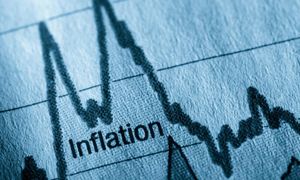The Russian rouble has plummeted to its lowest value against the US dollar, crossing the 110 roubles per dollar mark on November 27, 2024. This sharp decline, which has not been seen since March 2022, reflects the growing economic turmoil driven by sanctions and geopolitical tensions stemming from the war in Ukraine.
Following the rouble's fall, the Russian stock market also experienced significant drops, declining by over 20% this year as many investors opted to transfer their assets to safer deposits. Analysts are closely observing the situation, anticipating intervention by Russian financial authorities to stem the currency's instability.
This recent decline is not merely incidental; it marks the most significant financial event for Russia since the onset of the full-scale invasion of Ukraine. The rouble’s depreciation is compounded by the stock market’s downturn, highlighting the uncertainty investors are feeling as they shift their savings to deposits. One analysts notes, "the ruble is described as being 'in free fall,' indicating potential crises on the horizon for the economy."
Several factors contribute to the rouble’s recent decline. The currency has dropped below the 15 mark against the Chinese yuan, marking its lowest value since March 2022. Experts predict the rouble could sink even lower, potentially falling between 115 and 129 roubles per dollar by the end of 2024. New sanctions, particularly those impacting Russia's oil and gas sectors, have disrupted foreign trade payments, leading to currency shortages.
While the rouble's weakness may appear to benefit Russian exports by making them cheaper, the flip side is tougher times for domestic consumers. Imported goods are becoming increasingly expensive, raising concerns over inflation within Russia. Finance Minister Anton Siluanov has shrugged off concerns about the rouble’s weakness, citing potential benefits for exports. Yet, with many major Russian banks facing sanctions from the US, the options for foreign currency transactions are severely limited, increasing reliance on cash imports of dollars.
This commercial turmoil is just one aspect of the complex economic pressures on Russia. Following the collapse, the Russian central bank was compelled to act by pausing foreign purchases on the domestic currency market, hoping to reduce volatility. The central bank’s actions are part of broader attempts to stabilize the economy as it grapples with challenges like rising inflation and dwindling currency value. "Inflation pressures are compounding, and the central bank’s interest rates are pushed up to tackle this problem," said Timothy Ash, an expert on international financial markets.
President Vladimir Putin has downplayed the rouble's fluctuations, asserting there's no reason for panic. Speaking to reporters, he noted, "the situation is under control, and there are absolutely no grounds for panic." He added, "The fluctuations are influenced not just by inflation but also major payments to the budget and oil prices, among other seasonal factors."
Similarly, Kremlin Spokesman Dmitry Peskov dismissed the concerns about the rouble’s decline, emphasizing it won’t affect ordinary Russians as they are paid salaries in roubles. Observers, though, see the economic hand-wringing as more than just casual concerns. Reports indicate inflation was already sitting at 8.5% as of October, with the prices of staple goods experiencing dramatic increases.
Economists are beginning to sound alarms, viewing the rouble's decline not as isolated but indicative of the broader economic health of Russia. While top officials attribute the rouble’s devaluation to external sanctions and foreign market pressures, many think these sanctions are hitting harder than anticipated, with the cumulative effects of the past two years becoming painfully clear. Joseph Brusuelas from RSM US remarked, "It’s evident the cumulative impact of two years of sanctions is starting to impede the Russian economy significantly. The war has shaped this narrative, and the Kremlin is beginning to feel the pressure as domestic resources dwindle."
Despite the downturns, analysts note there are some resilient elements. Russian oil and gas exports have propped up the economy, allowing it to grow even amid international resistance. The International Monetary Fund has adjusted its forecast upward, predicting 3.6% growth for 2024. Nonetheless, the expected economic deceleration, marked by projected growth declining to 1.3% by 2025, points to looming economic challenges as private consumption stumbles and labor markets tighten.
What was once seen as temporary volatility has shifted perception dramatically, especially with new sanctions targeting Gazprombank and cutting off energy-related transactions with US financial institutions. This has forced many businesses to reevaluate their positions. The Biden administration appears intent on applying increased pressure, hoping to destabilize the Russian economy.
"This entire situation may lead to a broader crisis," Timothy Ash warned. "The rouble has fallen significantly since August, compounding issues already wrought by sanctions. When economic foundations are shaken to this extent, it raises red flags about the immediate future and the government’s ability to approach their economic challenges effectively."
The Kremlin’s recent messaging seeks to present confidence, with officials stating the weakening of the rouble is unrelated to fundamental economic health, insisting the trade balance remains strong. Nevertheless, with every passing day, more voices echo the sentiment of brewing troubles, such as soaring inflation rates hinting at the real consequences of the sanctions taking their toll—and the prospect of economic resilience against the mounting pressures remains uncertain for the Russian populace.



